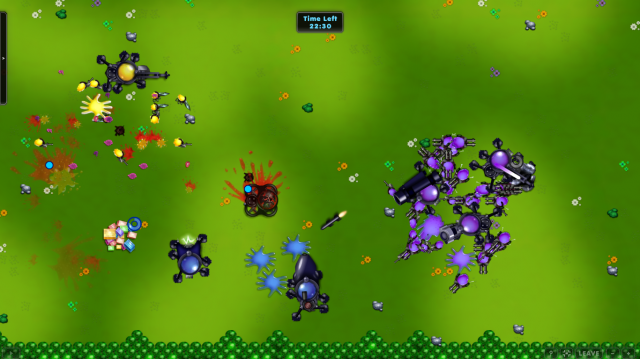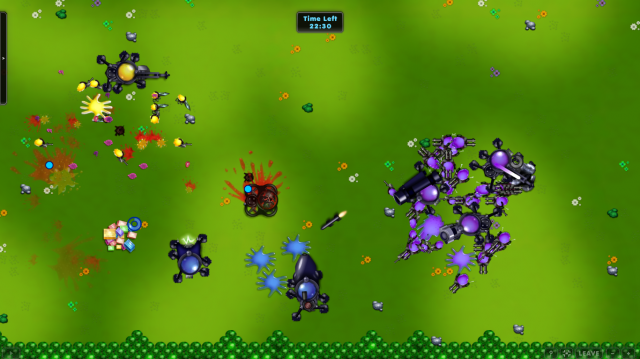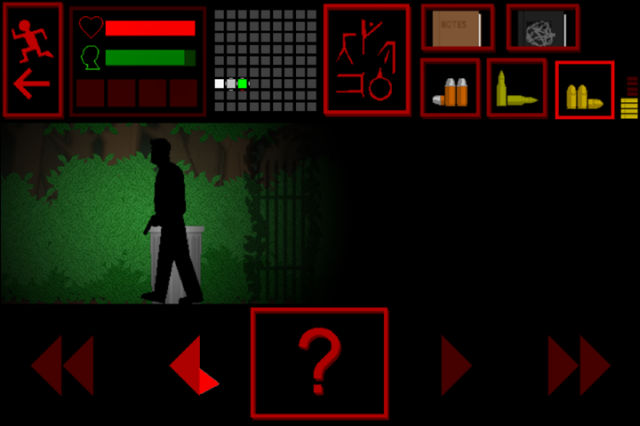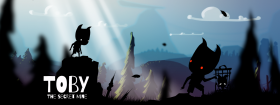Toby: The Secret Mine Review
Toby: The Secret Mine is a puzzle-platformer from an individual by the name of Lukáš Navrátil. The game is very clearly inspired by Limbo, a game that the developer himself has admitted to taking the game’s main inspiration from. While the game has been available on the PC market since October 2015, the game was recently released on the iOS App Store in April 2016; with the game lacking none of its original charming design.
Similar to many other 2D platformers, the gist of the game is to hold right until you get to the end; jumping and solving puzzles along the way that might hinder your progress. On your screen you are supplied with no more than four buttons: right, left, jump, and an action button. Each one of these are self-explanatory, with the action button being used in cases where your character needs to activate a trigger or something within the game world.
Again, similar to its inspiration, Limbo, the game features a number of puzzles that require the player to think with their head to solve. At times, you might come across some moveable boxes to reach higher places, something that we’ve all seen before or even levers that raise platforms to make that next platforming segment actually possible.

Since I’m pooling pretty much all of the similarities that Limbo and Toby: The Secret Mine share, I feel it best to mention the aesthetic choices the pair chose, but with slight deviations between them. Whereas Limbo was a dark world, one that was devoid of colour and only ever consisted of white, black, and grey colours to big up the atmosphere, Toby: The Secret Mine takes that stance by having black and white platforms and 2D elements that are necessary for the player, but the backgrounds – parts of the world that don’t play a part in the game, other than visually do in fact have colour. Even though the pair have similar stylings, Limbo tackles a much darker subject once you’ve played your way through the game; whereas Toby: The Secret Mine isn’t aiming for quite that same effect on the player.
Aesthetically, the game does look fantastic, especially when you take a minute to look at the gorgeous, beautifully detailed backgrounds and lens flares that you’ll see throughout your time in the game. Despite your platforms being in nothing more than black and white, they still have a nice amount of style and aesthetic to them, something that certainly doesn’t go amiss in this game.
It does have to be said, the animations in Toby: The Secret Mine for the most part looks quite stunning and fluid, with the only real exception being the jump. Every time he does a jump, he very quickly leaps into the air, at which point his knees finally start to bend in the air as if he was trying to get the maximum height, but that only occurs on the way down. When in comparison to the other gorgeous animations that the title is filled with, the jump one simply doesn’t feel like it fits. It isn’t a fluid animation, which doesn’t help the overall feeling when you jump because it just feels too immediate and doesn’t suit the rest of what the game has going on.

Once more drawing comparisons with Limbo, a title that kept its story vague until the very end; only to finally unveil from behind the curtain and reveal the significance of the story. For that, it’s no surprise that Limbo had such an impact on players and the gaming industry in general. This is one element that Toby: The Secret Mine really does seem to have undermined, due to the fact that the story isn’t really ever-present and is fairly lacking. Basically, there’s a race of red-eye individuals that for some reason kidnap about 50-odd white-eyed individuals for no real reason other than the red-eyes are meant to be evil. Throughout the game you’ll come across these caged up NPCs and you’re given the chance to rescue them, but the NPCs act as little more than unnecessary collectibles in the game, rather than an addition to the story. When it comes down to it, the story in the game really is quite disappointing.
Now, Toby: The Secret Mine may be filled with charm and beautiful elements spread throughout, but the problem with having an aesthetic where your platforms are all the same is it can quickly make things a touch confusing. For instance, there’s a part near the beginning of the game where you are chasing the first kidnapper and you come up to a plank of wood blocking your way. I wasn’t quite sure on whether it was something that heeded my progress or what, so I continued to run towards it, at which point my character proceeded to move it out of the way and carry on. Looking back on it, it wasn’t self-explanatory that was something you could do in the game, as there was no previous experience or tutorial explaining that. You just had to hope holding right would get you where you needed to go!

Touching on this problem once more, there are times where you might come across areas that look like the dark shapes could in fact be platforms hovering above spikes; until you jump. Then you fall to your death and have to start back at the nearest checkpoint because you simply couldn’t tell from the art-style that wasn’t in actual fact a platform.
Overall, Toby: The Secret Mine truly is a beautiful game with its Limbo-inspired graphics, which it manages to pull off and yet put in its own spin on things. Animations for the most part look great, with some rather small exceptions to this rule. The lack of any real story does put a damper on the whole experience, however, as do some of the platforming issues that might crop up during a playthrough of the game.
Toby: The Secret Mine (Reviewed on iOS)
This game is good, with a few negatives.
There are a couple of negatives here and there, but if you at all have some love for Limbo, then give the game a go. It tries impeccably hard to be just like the puzzle-platformer; maybe a little too hard at times, but it differentiates enough to warrant a look.








COMMENTS